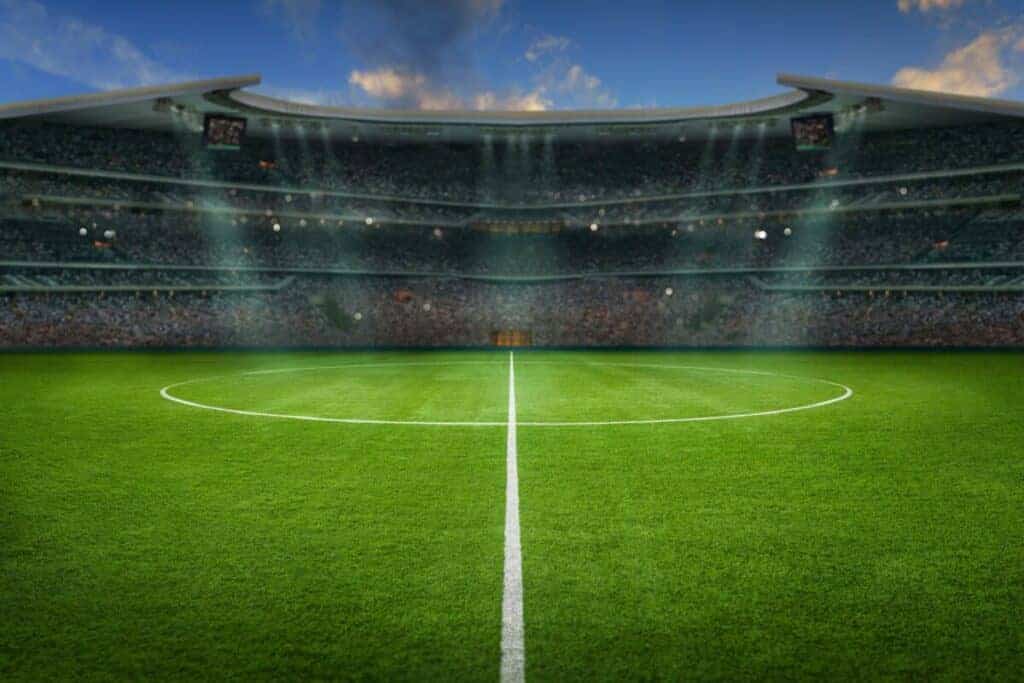most common soccer terms

Like most sports, there are hundreds of terms used in soccer. It is sometimes hard to keep up with and remember all of the terms that are commonly used in soccer.
If you want to brush up on common soccer terms, this is the perfect article for you. Below is a list of common soccer terms and what they mean.
Assist
An assist is when you do something that helps another teammate score. It is used as a statistic for players. For example, if someone had 4 assists in a game, it would mean that on 4 occasions they did something (like making a pass) that allowed another teammate to score.
Header
A header means someone hit the ball with their head. A header can be done to shoot the ball toward the goal, be passed to a teammate, or get the ball away from the goal. This technique can be used by both offensive and defensive players.
Kickoff
This is the kick that puts the ball into the game. An opening kickoff is the first kick of the ball that starts the game.
Match
A match is another way of saying the ‘game’, ‘tie’, or ‘fixture’. Its features include two 45-minute halves in which the referee keeps track of the time. The clock is continuous until the end of the first half. The referee will add time to the clock if injuries or stops in plays occur.
Midfield
Midfield is an area of the field that is the middle region between the two goals. Midfielders are the people that play in this area. They play in the region between forwards and defenders, and their job is to control traffic in the midfield and control the transition between attack and defense.

Offside
This is a place on the field in which you are on the opposing team’s side. Specifically, it is a part of the field where you are not allowed to be. Therefore, being on the offside is a violation that is given when an offensive player is closer to the opposing team’s goal than both the ball and the second-to-last opposing player, specifically at the time that the ball is passed to the player by their teammate. This violation can not be administered if the player is on their own side of the field or if they get the ball from a corner kick, goal kick, or throw-in.
To put it in different words, if a player plans to pass the ball to their team member and that member is closer to the goal than where the ball currently is and closer than the second to last player on the other team, an offside violation will occur. In the case of an offside violation, the opposing team receives a free kick.
Free Kick
Free kicks are given when one of the teams commits a foul. The kick is then given to the opposing team at the location where the infraction took place. There must be 10 yards of space between the kicker and the opposing players. Free kicks are typically direct, which means that the kicker can score a goal without the ball having to come into contact with another player.
Indirect free kicks are used for minor fouls that are committed inside or close to the penalty area. Indirect free kicks require the ball to touch another player before a goal is made. In the case of indirect free kicks, it is most common that the player kicking the ball will ‘tap’ the ball a short distance away from a fellow player and will then take a direct shot to make a goal.
Penalty
Penalties are one option to break a tied game. Both teams get to nominate 5 members of their team to be ‘penalty takers’ who each take turns making penalty kicks. If the teams are still tied after each has had their 5 penalty kicks, they continue to alternate through the teams taking penalty kicks until one of the teams has more goals. To clarify, both teams are given the same number of kicks. The penalty kicks are given in rounds up to 5. If the teams are still tied then more rounds are added until one team wins.
Penalty Kick
A penalty kick is the shot that a player gets to make when the opposing team has gotten a penalty for breaking a rule. It takes place 12 yards from the front of the goal and typically occurs as a result of a foul that took place within the penalty area. The penalty area is an 18-yard rectangular area in front of the goal. Within this area, the goalie can touch the ball with their hands. This is also the region where fouls committed by the defending team result in penalty kicks.
When a penalty kick happens no player other than the person kicking the ball and the opposing goalie can be in the penalty area until after the kick has happened. The opposing goalkeeper is not allowed to go past the goal line until after the shot has been made. However, the goalie can move from side to side.
Corner Kick
A corner kick is something that is given when the defending team makes the ball go over the end line. It is given to the offensive team to kick from next to the corner flag. Just like a free kick, the ball is kicked from a stopped position. The opposing players must also be positioned at least 10 yards away.
Goal Kick
A goal kick is given if the offensive team makes the ball go over the end line. If this happens, the ball is placed in the corner of the defending team’s 6-yard box. The defensive goalie then kicks the ball to put the game back into play. After the ball has been kicked by the goalie, it can not be touched again by any of the players until it is out of the penalty area.

Tackle
A tackle is a move in which the player tries to steal the ball by sliding toward the ball. The player making this move must come in contact with the ball first. As long as they touch the ball first, they are allowed to touch the player currently in control of the ball. However, if the person making the tackle hits the opposing player before they make contact with the ball, they are given a foul. Tackles from behind are not allowed and also result in a foul.
